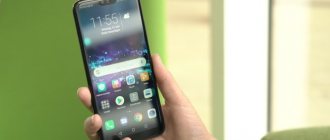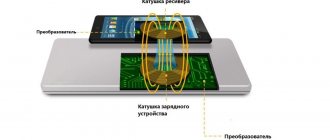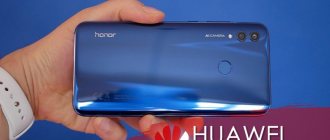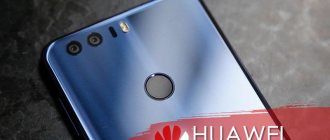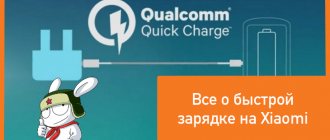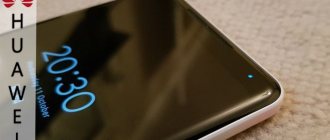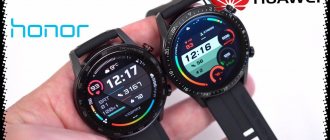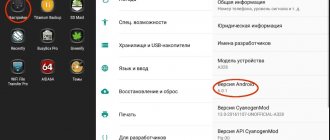GPU Turbo is a new opportunity to get the most out of your smartphone and increase its productivity several times. To attract more people to their products, giant companies are trying to use all the capabilities of new generation technologies. In this article we will talk about GPU Turbo: application features, functionality, advantages, prospects for improvement, scope of application, etc.
How it works?
In general, GPU Turbo is more of a marketing ploy to attract attention to its products. In fact, the EMUI shell has been optimized, which makes it possible to make the picture “more stable” by 30 FPS in games where there was a drawdown of 25 to 35 frames per second. At the same time, power consumption is reduced by up to 30% in games, but this is rather an addition to the main feature and it does not always work (or maybe does not work at all), at least in comparative tests, it was not possible to record significant battery savings.
Don't expect GPU Turbo to be able to optimize FPS in many games, as mobile game content developers need to optimize on their end as well.
GPU Turbo in action: launching games
Of course, we turn all the picture settings in each hit to maximum values and turn on the FPS counter. Let's start the test drive with the "battle royale".
In PlayerUnknown's Battlegrounds we get an average of about 40 frames per second - the maximum for the game. When landing from an airplane, the FPS can drop to 25 due to the large number of graphics to process; small freezes are noticeable. On the ground the situation stabilizes, occasionally the action movie produces 30 fps, but only for a few seconds, with a quick return to the original indicator. This is noticeably different from gaming on smartphones that do not support GPU Turbo: there FPS drops more often.
The same can be said about energy consumption: minus 17% per hour is a modest figure for such a sophisticated picture. The maximum battery temperature was only 38 degrees during the entire testing period - also an excellent indicator.
By the way, GPU Turbo technology comes with a pleasant bonus: there is vibration feedback, just like when playing on gamepads. For example, when starting PUBG, the gadget vibrates when a bullet hits the character, and in Mobile Legends - during particularly strong attacks.
In Asphalt 9, GPU Turbo also shows good results: even at maximum settings, the device maintains a stable 30 frames per second. Although there is still a load on the CPU, this does not affect the feeling of the game.
More than four hours of play on a single charge is a very respectable figure for a race packed to the brim with special effects. The maximum battery temperature is within 40 degrees.
How to turn it on?
We cannot enable or disable GPU Turbo directly, like the same NFC function in Honor 9 Lite. This functionality is included in firmware 8.0.0.132 in LLD-L31 smartphones with region C10 (Russia and the CIS).
To see if you have this update, go to: Settings - System - About phone.
If you have an earlier version, click "System Update".
UPD
. Newer versions have already been released that include all previous updates. For example version 8.0.0.133.
GPU Turbo technology immediately after the announcement aroused interest, because users were promised increased performance in games in existing smartphones, and even with a noticeable reduction in power consumption. However, the Chinese company did not disclose all the features of the technology in detail, so third-party specialists got down to business.
They found that GPU Turbo rather stabilizes application performance and, in particular, fps in games. Where before it floated in the range, for example, from 25 to 35 frames per second, with GPU Turbo the indicator stabilizes at 30 fps. The manufacturer itself also reports a 30% reduction in energy consumption, but not all tests confirm this.
We will not measure fps; we will evaluate by eye the smoothness of the picture and whether the difference is visible. But we will record the degree of battery discharge. For tests, we took two Honor 10 smartphones, one of which had the GPU Turbo update installed, the other not.
First we launched the popular PUBG, but we couldn’t notice the difference in picture quality. Only once, when loading a map, a smartphone with GPU Turbo rendered it instantly, without updating - graphic artifacts appeared for half a second. As for the battery, after 10 minutes of play the consumption was also similar: with GPU Turbo the battery drained by 5%, without - by 4%.
Real Racing 3 had similar results: there was no visible difference in the smoothness of the picture, and the battery charge decreased by 4% for a smartphone without GPU Turbo and 3% for a smartphone with the new technology.
In the second run, the phones were tortured with games for 20 minutes each - not everyone can withstand mobile gaming for longer at a time. The battery of Honor 10 with the installed update and GPU Turbo dropped by 7% during the specified period, without it - 8%. If we take the average values for three runs, a mobile phone without GPU Turbo “squeezed out” the battery by 4%, with the new technology - by 5%. You can make an allowance for the error, so it was a kind of battle draw, a 30% reduction in energy consumption could not be recorded.
As for performance, everything is also completely ambiguous: the picture on a phone with GPU Turbo was sometimes inferior in smoothness to that on a smartphone without it. But in other cases there was no difference. There is no particular point in measuring in “parrots”, that is, fps: the user, looking at the device screen, only decides whether he “likes” or “dislikes”.
The technology looks set to improve, but you shouldn't expect much from what will probably be a completely software solution. Even in games adapted for it (PUBG, Mobile Legends and Asphalt 9) we didn’t see much of a difference.
Just a few years ago, gamers considered only two platforms for their favorite entertainment. These are personal computers and game consoles. But now mobile phone manufacturers have intervened in the struggle between these systems and are trying to lure gamers to their devices. Indeed, modern smartphones are very powerful and productive. And their characteristics are quite enough to run many “heavy” games. The problem is that when running such applications, the processor starts to heat up and the battery drains very quickly.
GPU Turbo in Honor Play
GPU Turbo announced in summer 2021. In terms of marketing, this is a good decision, since sales of Huawei phones have increased slightly since the introduction of GPU Turbo. But is this mode any good in real life? It's good if you don't have high expectations and you understand exactly how it all works.
In short, GPU Turbo increases the efficiency of the chipset. Efficiency is the amount of energy spent on one operation, in the case of games - on drawing one frame. In theory, due to efficiency, you can achieve a small increase in frame rate, but the main goal of GPU Turbo technology is to reduce power consumption without compromising operating speed.
More on all this in detail below. GPU Turbo is a software mode that optimizes the phone’s performance when drawing frames. It can be thought of as an additional “layer” between the application (game) and graphics APIs like OpenGL or video adapter drivers that control the operation of the GPU at a low level.
The operation of GPU Turbo technology can be simplified as follows. Let's say in the game you are in a static position and exploring the location. There is no need to re-draw stationary objects in each frame. It is enough to update moving objects, for example, moving characters. This reduces the load on the GPU and disables several cores. In the case of the Mali-G72 MP12, 4 or 6 cores will be enough to update the frame, and the remaining 6-8 cores will be idle.
What does this give us? Firstly, the graphics accelerator consumes less energy. The GPU Turbo technology press release states that power consumption is reduced by 30%. For mobile games, these “minus 30” can ultimately give an extra hour of play without recharging. Secondly, GPU efficiency increases by 60%, but it is important to understand that efficiency and framerate are not the same thing.
To analyze the efficiency of a graphics adapter, a parameter such as the number of milliwatts spent on drawing one frame is used. Tests have shown that if you run a game without GPU Turbo on the same phone, and then install the update and go through the same location with optimization enabled, the mW/frame figure actually decreases. That is, the GPU consumes less energy.
What about the framerate? Typically, GPU Turbo does not increase the maximum framerate in games, at least at this stage of technology development. There are exceptions, but in all tests it was possible to obtain a maximum of 10% increase in frame rate. A similar effect was noticed only in games that support this mode, and for now they can be counted on the fingers of one hand.
Perhaps when game developers optimize applications for a new component of the software environment, the situation will change, but for now the peak frame rate remains virtually unchanged. But this does not mean that GPU Turbo is empty advertising and nothing more. The effect of optimization is manifested in the stabilization of the frame rate: the deviation of the frame rate becomes minimal. There are fewer critical failures, and these failures are no longer as deep.
Bottom line . GPU Turbo in Honor Play does not overclock the graphics adapter, does not increase the maximum frame rate, or increases it by 5-10%. This is part of the software environment that optimizes the operation of the GPU, reduces energy consumption, reduces frame rate deviation, and avoids critical FPS drops. Reducing power consumption provides another benefit - the chip heats up less and there is no thermal throttling during long gaming sessions.
How to enable GPU Turbo?
No way. The software environment is part of the update. Once you install the appropriate update (newer smartphones may have it installed out of the box), GPU Turbo mode is enabled by default. This will not affect the performance of the smartphone in any way, since GPU Turbo does not “choke” or forcefully close other applications. It also does not overclock the processor, so you don’t have to worry about increased energy consumption. At least that’s what Huawei developers assure.
Honor Play: battery and fast charging
After a detailed conversation about GPU Turbo technology, let's return to the Honor Play review. A plus for the Honor Play's autonomy is a powerful 3750 mAh battery, a minus is a powerful hardware platform and a large screen with a diagonal of 6.3 inches and FHD+ resolution. As a result, we get a good balance, with which Honor Play becomes a good choice for those who require from a smartphone not only high operating speed, but also decent battery life.
What is the essence of technology
Interested people first heard about GPU Turbo on Honor and Huawei about a year ago – in the summer of 2018. Naturally, several questions arose:
- What is it and how does it work?
- What will the owner of a smartphone that uses this technology ultimately get?
Let's imagine a situation during which the owner of a smartphone is playing one of the modern energy-intensive 3D games. In the classic version of using the processor, this piece of equipment is forced to re-process every frame all of the objects that are present on the screen of the mobile device. Naturally, this requires increased energy consumption.
The developers from Huawei thought and proposed the following solution - there is no need to process all objects displayed on the screen. Let the processor work only on those that appear or move during this stage of the game. All the rest, static ones, which can only change their position in terms of their viewing angle, should not waste technical resources on their processing. After all, they have already been drawn once. Why repeat a similar operation many times?
It is for this moment that the technology proposed by specialists from Huawei is responsible. It deals with the so-called establishment of interaction between the game itself and the smartphone’s CPU and eliminates the need for constant rendering of those objects that are already on the mobile phone screen for a long time in a static state.
What's the result? According to official tests of the manufacturer, GPU Turbo technology allowed:
- Increase the performance of graphics chips used in branded smartphones by sixty percent;
- Reduce the rate of battery discharge by approximately thirty percent.
Agree, very good results. Especially when you consider that in normal mode, when running modern energy-intensive games, the battery charge is simply catastrophically lost, and you can literally fry eggs on the device’s body.
Why is productivity increasing? Many people know that it drops when the mobile device heats up too much. The problem with any smartphone is the inability to place even a small cooling system inside, as is done in personal computers and game consoles - the dimensions of the case simply do not allow this. And heating is greatly influenced by the operation of a multi-core processor. The more nuclei are involved in a particular process, the more energy is released. The consequence is that the phone quickly heats up, the built-in protection system turns on, which, by reducing performance, tries to solve the overheating problem. The game begins to slow down and it simply becomes impossible to play further without a serious break.
When classically running games with heavy 3D graphics, the mobile phone’s CPU is forced to use all available cores to render the image. When using processors with GPU Turbo, more time is used with only 4-6 cores. All others are not functioning at this moment. As a result, the mobile device heats up more slowly, and good performance lasts noticeably longer.
True, there are several important nuances that you also need to know about:
- Not all processors installed in mobile devices from Honor or Huawei support this technology. At the moment, the availability of support on Kirin 970 processors is definitely known;
- Interaction between the technology and the software used is ensured only if GPU Turbo is initially integrated into the program itself, in particular, into the game. That is, not all gaming applications can use this solution.
Detailed technical specifications
Make and model
Make and model of the device, and alternative names (if any).
| Brand Device manufacturer company. | Huawei |
| Model Device name. | Nova 3 |
| Alternative names Other model names, if available. Sometimes the model is called differently, depending on the country or because of popular nicknames. | nova3 PAR-AL00 PAR-LX1 PAR-LX1M PAR-LX9 PAR-TL20 |
Design
Appearance of the device including dimensions, weight, volume, colors and materials.
| Width The horizontal side of the device when used in standard orientation. | 73.7 mm (millimeters) |
| Height The vertical side of the device when used in standard orientation. | 157 mm (millimeters) |
| Thickness The cross-sectional size of the device. | 7.3 mm (millimeters) |
| Weight How much does the device weigh excluding the case, SIM and memory cards and other additional elements. | 166 g (grams) |
| Volume Approximate value calculated using the formula: length times width times height. | 84.47 cm³ (cubic centimeters) |
| Colors What colors is the device available in? | Black Purple Gold Cyan Red |
| Housing materials What materials is the body made of? | Aluminum alloy Glass |
System on a Chip (SoC)
A system on a chip, a single-chip system (System on a Chip, SoC) is when several systems performing different device functions are connected on one chip.
| System on a Chip (SoC) A single-chip system that contains components such as a processor, graphics accelerator, memory units, communication interfaces, etc., as well as software for the operation of the system. | Huawei HiSilicon KIRIN 970 |
Central processing unit (CPU)
| Central processing unit (CPU) The main component of the device is responsible for calculations and data processing. | 4x 2.36 GHz ARM Cortex-A73, 4x 1.84 GHz ARM Cortex-A53 |
| Technical process What technological process is used to make the chip? The smaller the process technology, the better - the chips consume less power and generate less heat. | 10 nm (nanometers) |
| Processor size Processor capacity is a parameter that indicates how many bits of data a processor register processes in 1 clock cycle. This is usually 32 or 64 bits. | 64 bit |
| Instruction Set Architecture Instruction set architecture (ISA) is a programmable part of the microprocessor core used by software to control the operation of the processor. | ARMv8-A |
| Number of processor cores The processor can be either single-core or multi-core. The performance of the processor depends on the number of cores (threads). The more cores working simultaneously, the higher the power consumption, so in mobile devices all cores are used only under high load. | 8 |
| CPU clock speed Clock speed is the number of operations per second that a processor or its core can achieve. The higher the frequency, the higher the overall performance of the device, but performance also depends on the processor architecture and the number of cores. | 2360 MHz (megahertz) |
Graphics Processing Unit (GPU)
| Graphics Processing Unit (GPU) The graphics processing unit (GPU) is used to process and display graphics - 3D effects, games, interfaces and other visual elements. Due to the pipeline architecture, the GPU is many times more efficient in graphics processing than the processor. | ARM Mali-G72 MP12 |
| Number of GPU cores Similar to a processor, a GPU can have one core or several. The number of cores (threads) determines the performance and amount of information processed. The more cores, the better. | 12 |
| GPU clock speed Clock speed is the number of operations per second that the GPU or its core is capable of achieving. The higher the frequency, the higher the speed of the processor, and therefore the number of tasks it can solve. | 767 MHz (megahertz) |
Random access memory (RAM)
| Amount of random access memory (RAM) RAM (Random Access Memory, RAM, RAM) is temporary memory (works only while the device is running), which stores data and code for the operational operation of programs and applications. The more RAM, the more programs you can run simultaneously without loss of performance (there will be fewer “brakes”). | 4 GB (gigabytes) 6 GB (gigabytes) |
| Type of random access memory (RAM) Information about the type of RAM used by the device. | LPDDR4X |
| Number of RAM channels 1 is a single-channel RAM operating mode, basic, when 1 memory module is used. 2 is already a two-channel mode - a mode of parallel operation of 2 modules or pairs of modules, memory channels - this mode is 2 times faster than a single-channel one. 3 – three-channel mode is 3 times faster than single-channel mode. | Dual channel |
| RAM frequency The frequency of RAM determines the speed of RAM, or rather the speed of data transfer and reception. In theory, the higher the frequency, the more powerful the RAM. | 1833 MHz (megahertz) —- i7 coprocessor Neural-Network Processing Unit GPU Turbo |
Built-in memory
Most mobile devices have built-in Flash memory, which is used as a storage for system data, the operating system, as well as user data - photos, videos, recordings and much more.
| Built-in memory capacity The higher the amount of built-in memory, the more games, programs, music, videos and your other files will fit in the device, especially the amount of memory is important when the device does not support memory cards. | 128 GB (gigabytes) |
Operating system
A mobile operating system (OS) is pre-installed software with a well-thought-out interface for user control of device functions.
| Operating system (OS) The operating system installed by default by the device manufacturer, as well as its version. | Android 8.1 Oreo Android 9.0 Pie |
| User interface User interface (UI - user interface) is usually a graphical shell that ensures the transfer of information between the user and the operating system. | EMUI 8.2 |
Battery
To operate autonomously, a mobile device requires a battery that powers all its components.
| Battery capacity The main characteristic of a battery is its maximum capacity, that is, the charge it can store. Capacity is measured in mAh (mAh, milliamp-hour). The higher the capacity, the longer the mobile device can work. | 3750 mAh (milliamp-hours) |
| Battery type Many types of batteries have been used in portable devices, but NiCd (nickel-cadmium), NiMH (nickel-metal hydride), and even more so SLA (lead-acid) batteries are already considered obsolete. Instead, modern mobile devices use Li-Ion (lithium-ion) and Li-Pol, Li-Poly (lithium-polymer) batteries. | Li-polymer |
| Power adapter Characteristics of the charger (adapter, power supply) included in the standard package of the mobile device. More precisely, the output voltage in volts (V) and the output current in amperes (A). | 9 V (volts) / 2 A (amps) |
| Fast charging Fast charging is when the device charges very quickly. For example, up to 50-70% of a full battery charge in ten minutes. | Yes |
| Fast charging technology What fast charging technology does the mobile device support? Fast charging is when the device charges very quickly, for example up to 50-70% of the full battery charge in ten minutes. | Huawei Super Charge 3.0 |
Screen
The screen (display) is the main element for displaying graphic information.
| Technology The technology used to make the screen. There are many types of display manufacturing with their pros and cons. | IPS |
| Diagonal The screen diagonal of a device is measured in inches (inch, in or simply ″), and 1″ is equal to 2.54 cm. | 6.3 in (inches) 160.02 mm (millimeters) 16 cm (centimeters) |
| Width Approximate screen width | 67.06 mm (millimeters) 6.71 cm (centimeters) |
| Height Approximate screen height | 145.29 mm (millimeters) 14.53 cm (centimeters) |
| Aspect Ratio Aspect ratio is the ratio of the shorter side of the screen, which is considered to be 1, to the longer side, which is denoted by a decimal fraction indicating the ratio to the short side. | 2.167:1 |
| Screen resolution Screen resolution is the number of horizontal pixels (dots) multiplied by the number of vertical pixels. The higher the resolution, the more detailed the image will be. | 1080 x 2340 pixels |
| Pixel Density The number of pixels per inch or PPI (pixels per inch) indicates the density of pixels per 1 inch (2.54 cm) of the screen. The higher the PPI, the sharper the image, and the less visible or even invisible “squares and dots” (pixels). | 409 ppi (pixels per inch) 160 ppcm (pixels per centimeter) |
| Color depth Color depth means how many bits are used in 1 pixel to display color (bits per pixel). | 24 bit 16777216 colors |
| Screen area Approximate usable area occupied by the screen on the front of the device. The higher the percentage, the narrower the frames around the display or the smaller the “chin with bangs.” | 84.47% (percent) |
| Touch screen A touch screen is a device that usually covers the display and is a touch input tool. In fact, in mobile devices, the touchscreen is a replacement for the keyboard and mouse. | Yes |
| Touch screen type There are many types of touch screens, with their pros and cons. Mobile devices often use capacitive touchscreens, but technology does not stand still and new types of sensors are appearing. | Capacitive |
| Multi-touch Touch screen support for two or more touches. For example, zooming photos with two fingers. | Yes |
| Impact-resistant protective glass of the display The screen and touchscreen of a mobile device are usually covered with protective tempered glass (sometimes plastic or film is used instead of glass) to protect the display from impacts and scratches. Many companies are engaged in the production of such protection, but the most famous are Corning - Gorilla Glass and Asahi - Dragontrail. | Yes |
Main camera
The main camera, usually built into the rear of the device, is designed for creating photo and video content.
| Maximum image resolution This is the maximum number of pixels (dots) horizontally and vertically. The higher the resolution, the more detailed the image will be. Resolution can also be indicated in megapixels - this is the total number of pixels that can be in the image, calculated by the formula: vertical pixels multiplied by the number of horizontal pixels and divide the resulting amount by 1 million. | 4608 x 3456 pixels 15.93 MP (megapixels) |
| Matrix type There are two main types of photomatrix, CCD (Charge-Coupled Device) and CMOS (Complimentary Metal-Oxide Semiconductor). Mobile devices mainly use a CMOS matrix - it requires less space, has low power consumption and heating. Recently, new types of sensors have begun to appear, for example PureCel from OmniVision. | CMOS BSI (backside illumination) |
| Focal length Focal length is the distance from the center of the lens to the image sensor. | 3.95 mm (millimeters) |
| Diaphragm Aperture (f-number, f) is used to control the light flux passing through the lens. The aperture is indicated by a fraction, and the smaller the fractional number, the higher the aperture passing through the lens. The more light that passes through the lens, the better overall, less noise in your photos and better night photography. | f/1.8 |
| Flash type Most mobile devices are equipped with light-emitting diode (LED) flashes, but there are also xenon flashes. As a flash, xenon is better - it is more powerful, but LED is more versatile (can work as a flashlight) and consumes less electricity. | LED |
| Maximum video resolution This is the maximum number of pixels (dots) horizontally and vertically. The higher the resolution, the more detailed the image will be. | 3840 x 2160 pixels 8.29 MP (megapixels) |
| FPS video recording at maximum resolution FPS (Frames per Second, frame rate) is the number of frames that changes in 1 second. The higher the number of frames per second, the smoother the image will be. In this case, we mean the number of frames that the camera can achieve at its maximum resolution; the lower the resolution, the higher the FPS can be. | 30 fps (frames per second) |
| Presence of flash Incorporating a flash into a mobile device allows you to take pictures in low light conditions. Creates the necessary lighting and compensates for the lack of natural light. | Yes |
| Digital zoom With digital zoom (zoom, enlargement), the subject is brought closer due to software image algorithms. The higher the magnification with digital zoom, the worse the image quality (noise, blur) will be compared to a non-zoomed one. | Yes |
| Number of lenses in the lens This is the number of optical elements (lenses) that are contained in the optical circuit of a camera lens. | 6 |
| Focus on face Function of auto-detection of living objects and autofocus on their face or head. | Yes |
| Panoramic shooting mode Panoramic photography is a series of frames where each subsequent frame is a continuation of the previous one; at the end of the shooting, all frames are stitched together at the software level to create a panoramic photograph. Frames can be shot both vertically and horizontally, and their width can be up to 360 degrees. This type of shooting is used when the camera's viewing angle is not enough to capture the entire scene. | Yes |
| HDR shooting mode HDR photography takes a quick series of shots with highlights, midtones, and shadows, then combines them into a single frame with high dynamic range. | Yes |
| White balance White balance is a setting that helps ensure the correct color reproduction in an image by determining the color temperature of the light source in the frame. The balance can be set either automatically or manually. | Yes |
| ISO Setting ISO is the level of light sensitivity. The lower the ISO, the less sensitive the camera's light sensor and the smoother the image with less noise. The higher the ISO, the higher the light sensitivity, but more noise, graininess, or decreased sharpness. | Yes |
| Additional Information Additional information about the functions and characteristics of cameras. | Autofocus Continuous shooting Geo-tagging Touch focus Exposure compensation Self-timer Scene selection mode RAW |
Additional cameras
Secondary cameras allow you to expand the capabilities of the main camera, such as adding a wide shooting angle, sharpness, optical zoom and other functions depending on the type of secondary camera.
| Second additional camera | 24 MP (megapixels) f/1.8 aperture |
Front-camera
The front camera of a mobile device (selfie camera, rear camera) is a camera on the front part, which is usually used for video communication, recognition of gestures or faces, and selfie photographs.
| Photo resolution The maximum image resolution that the camera can produce. As resolution increases, image detail increases. Resolution can also be indicated in megapixels (the total number of pixels that an image can consist of) - these are vertical pixels multiplied by horizontal pixels and divided by 1 million. | 5632 x 4224 pixels 23.79 MP (megapixels) |
| Matrix type There are not many types of matrices, the main ones are CCD, PureCel and the most popular in mobile devices due to low power consumption and compact size - CMOS. | CMOS BSI (backside illumination) |
| Diaphragm An aperture (or aperture) is essentially an adjustable baffle to control the amount of light passing through the lens. The aperture is indicated by a fraction, and the smaller it is, the more light passes through the lens, which has a positive effect on photographs - there will be less noise and better night photography. While the main cameras also come with an adjustable aperture, most front cameras have a fixed aperture. | f/2 |
| Video resolution This is the maximum resolution the camera can record video at. The higher the resolution, the better. | 1920 x 1080 pixels 2.07 MP (megapixels) |
| Frame rate (FPS) of video shooting This is talking about FPS at maximum video resolution; at lower resolutions, the frame rate per second can be higher. FPS determines the smoothness of the video, as well as the ability to speed up or slow down it. | 30 fps (frames per second) —- Secondary front camera — 2 MP |
Memory card
A memory card (flash card) is an external data storage device that is used in many devices to increase memory capacity.
| Memory card type and formats Mobile devices usually use 3 types of memory cards - SD, miniSD and the most common microSD. Each type has its own formats that the device supports. | microSD microSDHC microSDXC |
SIM card
Subscriber Identification Module (SIM) used in mobile devices to identify subscribers in cellular networks.
| Type, size of SIM card A regular (mini SIM) card has dimensions of 25x15 mm. Micro SIM - 15x12 mm. Nano SIM - 12.3x8.8 mm. The sizes of SIM cards are different and not interchangeable. There is also an eSIM (virtual, electronic SIM card), it is built into the device and does not take up space. | Nano-SIM (4FF - fourth form factor, since 2012, 12.30 x 8.80 x 0.67 mm) Nano-SIM / microSD |
| Number of SIM cards How many SIM cards does the device support? | 2 |
Mobile networks
This is a system in which communication and data transfer is carried out between subscribers, the location of one or more of which changes. This section lists the supported mobile communication standards and frequencies.
| GSM GSM (Global System for Mobile Communications) is a standard for digital mobile cellular communications of the second generation 2G with time and frequency division of channels. GSM came to replace analog cellular communications 1G (first generation). | GSM 850 MHz GSM 900 MHz GSM 1800 MHz GSM 1900 MHz |
| CDMA CDMA (Code Division Multiple Access) - this mobile communication standard can be classified as a 2.5G network (generation), unlike 2G, CDMA has higher speech quality, higher cellular network capacity and increased data transfer speed. | CDMA 800 MHz |
| TD-SCDMA TD-SCDMA (Time Division Synchronous Code Division Multiple Access) is a third generation (3G) mobile communications standard used in China. | TD-SCDMA 1880-1920 MHz TD-SCDMA 2010-2025 MHz |
| UMTS UMTS (Universal Mobile Telecommunications System), also called 3GSM, is a third generation (3G) mobile communications standard based on the WCDMA air interface. | UMTS 850 MHz UMTS 900 MHz UMTS 2100 MHz UMTS 1900 MHz (PAR-LX1; PAR-LX1M; PAR-LX9) UMTS 1700/2100 MHz (PAR-LX9) |
| LTE LTE (Long-Term Evolution, often referred to as 4G LTE) is a standard for wireless high-speed data transmission, which, although it belongs to fourth generation networks (4G), is essentially a transitional stage from 3G to 4G, greatly accelerating data transfer speeds. The standard has an improved version, LTE Advanced (LTE-A), which can already be considered a full-fledged 4th generation network. | LTE 800 MHz LTE 850 MHz LTE 900 MHz LTE 1800 MHz LTE 2100 MHz LTE 2600 MHz LTE-TDD 1900 MHz (B39) LTE-TDD 2300 MHz (B40) LTE-TDD 2500 MHz (B41) LTE-TDD 2600 MHz (B38) LTE 1900 MHz (PAR-LX9) LTE 1700/2100 MHz (PAR-LX9) LTE 700 MHz (B12) (PAR-LX9) LTE 700 MHz Class 17 (PAR-LX9) LTE 700 MHz (B28) (PAR-LX9) |
Mobile network data standards
What data transfer standards in cellular networks are supported by the device, as well as their speed.
| Data transmission technologies Technologies for receiving and transmitting data, as well as their maximum speed. | UMTS (384 kbit/s) EDGE GPRS HSPA+ LTE Cat 18 (221.0 Mbit/s, 1.2 Gbit/s) EV-DO Rev. A (1.8 Mbit/s, 3.1 Mbit/s) TD-SCDMA TD-HSDPA |
WiFi
Wi-Fi (Wireless Fidelity) is a technology for wireless data transmission over a local network among devices based on IEEE 802.11 standards.
| Wi-Fi Direct support The Wi-Fi Direct protocol allows multiple devices to connect directly, bypassing the use of routers or access points. | Yes |
| Wi-Fi Hot-Spot A hotspot is a Wi-Fi access point. In a mobile device, Hot-Spot turns the smartphone into a Wi-Fi access point, essentially turning it into a router capable of distributing the Internet. | Yes |
| Dual-band Wi-Fi DUAL-BAND (dual-band) Wi-Fi is the ability of a device to immediately receive or broadcast wireless signals in two frequency bands 2.4 and 5 GHz. 5GHz is a less congested frequency, due to which the connection will be of better quality. | Yes |
| WiFi MIMO MIMO is a spatial encoding method for a signal that increases the bandwidth of the channel in which data is transmitted and received by systems from multiple antennas. It is usually denoted as number (number of transmitters) x number (number of antennas). For example, 2x2 MIMO means that a WI-FI system consists of 2 transmitters and 2 receive antennas, while 1x1 is a traditional single antenna design. The more systems, the higher the throughput. | 2×2 |
| WiFi Supported WIFI wireless network standards. | 802.11a (IEEE 802.11a-1999) 802.11b (IEEE 802.11b-1999) 802.11g (IEEE 802.11g-2003) 802.11n (IEEE 802.11n-2009) 802.11n 5GHz 802.11ac (IEEE 802.11ac) —- |
Bluetooth
Bluetooth (BT, bluetooth (z), “blue tooth”) is a short-range wireless network (up to 10, sometimes 100 meters) operating on radio waves to transmit voice and data between devices.
| Bluetooth version Bluetooth technology is actively developing and, since 1998, has been constantly updating versions of the standard. Each subsequent version introduces one or several improvements in data exchange speed, range, facilitates pairing, reduces power consumption, or introduces some new protocols and operating profiles. The higher the Bluetooth version, the better. The technology is also backward compatible, for example, if your mobile device has version 5.0, then it will work with accessories version 4.2 and lower, but the improvements introduced in version 5.0 will not work; they will work only if both the device and accessories are version 5. | 4.2 |
| Bluetooth Low Energy (BLE) Bluetooth LE is a low energy BT protocol specification. | Yes |
| A2DP profile The A2DP Bluetooth profile is designed to transmit a high-quality two-channel stereo signal via Bluetooth to wireless headphones, speakers and other acoustics. | Yes |
Sensors
Modern devices have many sensors that help in measurements, trigger functions, and make using the device more pleasant.
| Light sensor The light sensor reacts to the light level and is able to adjust the screen brightness automatically based on this. This is necessary to reduce power consumption and ease of use of the device. | Yes |
| Proximity sensor The proximity sensor reacts to the proximity of the mobile device to some object. For example, the sensor is used when talking on the phone to turn off the screen, which saves energy and prevents you from pressing buttons with your ear or cheek. | Yes |
| Gyroscope Gyroscope (gyroscope, gyro sensor) is a sensor for orientation in space that tracks the angle of inclination of even a stationary device along three coordinate axes. The sensor is mainly used in conjunction with an accelerometer in games and applications. | Yes |
| Accelerometer An accelerometer is a sensor that measures apparent acceleration, that is, it determines the position and distance at which a mobile device moves in space. Based on the data from this sensor, the screen orientation change, pedometer, control using tilts and gestures in games and applications, etc. work. | Yes |
| Fingerprint's scanner The scanner is responsible for authorization using a previously saved fingerprint, as a result of which the device is unlocked, payment is made, some action is confirmed - just put your finger on the scanner. Scanners can be either built into the body or built into a button or screen. | Yes |
| Digital compass This is software that displays data from a magnetic sensor or GPS in the form of a compass on the screen of a mobile device. If there are no sensors or GPS, then the digital compass will not work. | Yes |
| Additional sensors | Infrared face recognition sensor |
Audio
Audio - characteristics and capabilities of a mobile device in terms of sound.
| Music speaker There are two types of speakers in mobile devices - auditory and musical. The auditory speaker (speaker) is used for conversation, the music speaker (buzzer) is used to play music and sounds. | Loudspeaker Earphone —- 7.1-channel Histen sound |
Navigation and location
The location is determined by satellite navigation systems that track the device's autonomous geospatial location at multiple points. The most common satellite navigation systems are GPS, GLONASS, and the Chinese BeiDou.
| GPS GPS (Global Positioning System) is a global satellite navigation system that can determine the position of a mobile device, build routes and find the desired object on the map with an accuracy of several meters. | Yes |
| A-GPS A-GPS (Assisted GPS) is an assistive technology that will help you quickly find the location of your cellular device without waiting for satellite data, which is especially important in indoors and cities. Location is determined in various ways, for example, Wi-Fi access points, mobile towers, bluetooth and others. | Yes |
| GLONASS GLONASS is a Russian Global Navigation Satellite System, which is similar to GPS and works in tandem with it, increasing the accuracy and speed of navigation. | Yes |
| Additional navigation systems | BeiDou |
USB connector
USB (Universal Serial Bus) is a serial interface for connecting peripherals to computers, smartphones, laptops and much more. The interface allows you to exchange data and power a peripheral device with energy, as well as connect several peripheral devices to one USB connector at once.
| Connector type What type of USB connector is used in the device. | USB Type-C |
| USB standard The higher the standard, the faster the throughput, or more precisely the data exchange rate. With version 3.0 of the standard, the current was increased to 0.9A, eliminating the need for additional power for some devices. | 2.0 |
| USB Mass Storage Connecting a mobile device via USB as a data storage device. That is, when you enable this mode, your device can be used as a flash drive. | Yes |
| USB OTG support OTG is the ability to connect peripherals, such as keyboards and mice, flash drives, card readers, and much more, to the USB port of your device via an adapter or directly. You can connect devices that do not require specialized drivers or additional power. | Yes |
| Additional characteristics Additional features of the USB connector, for example, OTG, whether the connection is supported, peripheral devices and additional memory. | Charging via USB |
Headphone jack
A TRS headphone jack (or jack) is a common standard of connectors used for transmitting audio signals. By diameter there are jack (6.5 mm), mini-jack (3.5 mm) and micro-jack (2.5 mm). In mobile devices, the 3.5mm jack was considered the most popular and widespread, but recently they began to be removed, leaving only USB connectors, through which headphones are connected with a corresponding plug or using adapters.
| 3.5mm headphone jack Does the device have a 3.5 mm audio jack? | Yes |
Connection and synchronization
Options for synchronizing your mobile device and connecting it to other devices.
| NFC NFC (Near field communication, near contactless communication) is a technology for contactless communication between devices over a short distance. Widely used for contactless payment, in the form of a travel card or pass, and is also used for reading and interacting with NFC tags and for exchanging data between devices. | Yes |
| Connection, synchronization Types of synchronization and connection technologies supported by the device. | Computer sync OTA sync Tethering VoLTE —- |
Browser
A browser is a browser program for viewing sites and their content on the Internet. Through the browser, you can open websites, search for information, download necessary files, watch streaming videos, play browser games, etc.
| Technologies Markup and programming languages supported by the built-in (standard) browser. For mobile devices, you can install additional browser applications if the standard one does not suit you. | HTML HTML5 CSS 3 |
Audio file formats/codecs
Mobile devices support many audio file formats, as well as codecs for playing them.
| Default formats The formats that the mobile device supports out of the box are indicated. But if the device does not support the format you need, then you can try adding support for it. Sometimes support depends on the technical characteristics of the device (“hardware”) and nothing can be added here, but often the ability to process a particular audio format depends on the software part. You can install another audio player or codec set separately. | AAC (Advanced Audio Coding) AAC+ / aacPlus / HE-AAC v1 AMR / AMR-NB / GSM-AMR (Adaptive Multi-Rate, .amr, .3ga) AMR-WB (Adaptive Multi-Rate Wideband, .awb) aptX / apt-X aptX HD / apt-X HD / aptX Lossless eAAC+ / aacPlus v2 / HE-AAC v2 FLAC (Free Lossless Audio Codec, .flac) MIDI MP3 (MPEG-2 Audio Layer II, .mp3) OGG (.ogg, .ogv, .oga, .ogx, .spx, .opus) WMA (Windows Media Audio, .wma) WAV (Waveform Audio File Format, .wav, .wave) LDAC |
Video file formats/codecs
Video file formats that the device supports and is capable of decoding and playing.
| Default formats Video file formats that the device is capable of playing with standard firmware and a standard (built-in) set of programs. Not all formats are supported by default, but you can install a third-party video player and/or set of codecs. | 3GPP (3rd Generation Partnership Project, .3gp) AVI (Audio Video Interleaved, .avi) DivX (.avi, .divx, .mkv) H.263 H.264 / MPEG-4 Part 10 / AVC video H.265 / MPEG -H Part 2 / HEVC MP4 (MPEG-4 Part 14, .mp4, .m4a, .m4p, .m4b, .m4r, .m4v) VP8 VP9 WebM WMV (Windows Media Video, .wmv) Xvid |
What can you play with GPU Turbo?
Initially, at the time of this decision, official support existed only in two game projects. Namely in PUBG and Mobile Legends: Bang Bang.
Fortunately, the developers not only presented another innovation, but also tried to make people interested in it. Therefore, we are actively working with manufacturers of games for mobile devices. Now you can evaluate the benefits of the new technology in a fairly large list of well-known virtual entertainment:
- Fortnite;
- Knives Out;
- Battle Bay;
- Crazy Taxi;
- Real Racing 3;
- Into the Dead 2;
- NBA 2K19;
- Dragon Nest M;
- Duel Links;
- PES 2019;
- Dragon Ball Legends;
- FIFA Mobile;
- Free Fire;
- Minecraft;
- Helix;
- Plants vs. Zombie Heroes;
- Subway Surfers;
- Brawl Stars;
- Speed Drifters;
- Asphalt 9;
- Vainglory;
- Arena of Valor;
- Rules of Survival;
- NBA 2K18.
GPU Turbo - what is it and what is it used for?
GPU Turbo technology was introduced in June 2021. This software update, the developers assure, increases the performance of graphics chips by up to 60% and reduces energy consumption during gaming by up to 30%. But how exactly?
The essence of the method is not to load the GPU with unnecessary work when rendering an image. If there are static elements on the screen that do not change from frame to frame, but only the angle of view on them varies, it is not practical to render them again. GPU Turbo creates such interaction between the software and the GPU that the GPU can determine the nature of the scene and the dynamics of the image. Therefore, it renders only the elements that change, without wasting resources on the same task. This results in a stable high FPS and saves battery power.
Honor smartphones for which an update with GPU Turbo will be released soon or has already appeared
Since we are talking about the interaction of the processor with software, two points are obvious. Firstly, the technology was created only for HiSilicon Kirin chips. In the case of Honor Play, we are talking about the 970 model, whose graphics processor is the Mali-G72 MP12, a 12-cluster GPU clocked at 850 MHz. It supports all current graphics APIs, including OpenGL ES 3.2, OpenCL 2.0, Vulkan 1.0 and DirectX 12 FL11_1.
Second, the CPU must receive image information from applications to learn to identify static and repeatable elements and predict their presence or absence. That is, the technology must be implemented into the game itself. At the time of launch, according to official information, GPU Turbo only supported PUBG and Mobile Legends: Bang Bang. Accordingly, we will study their behavior on Honor Play. We will also launch the latest Asphalt 9, whose graphics have so impressed industry experts.
Which smartphone should you buy to evaluate this solution?
It's understandable that many people don't want to bother reading technical documentation to understand which chip is used in a particular processor. They just want to come to the store, hand over money, and get their hands on a mobile device with certain characteristics.
Therefore, a list of smartphones that support Huawei's GPU Turbo technology will be very useful. And we have prepared it especially for you:
- Huawei: Maimang 6, Nova 3e, P20, P20 Pro, Mate 10, 10 Pro, Porsche Design Huawei Mate 10, RS, P20 Lite, Mate 10 Lite, Nova 2i, P Smart, Y9 2021, Mate 9, P10, P10 Plus .
- Honor: 10, View 10, 9, 9 Lite, 8 Pro, 7X, Play.
There really is a lot to choose from!
Characteristics
- OS: Android 8.1 running EMUI.
- Display: IPS matrix; 6.3 inches, 2340×1080, 19.5:9 format, 409 ppi.
- Processor: Kirin 970 with Mali-G72 MP12 video accelerator.
- Memory: 4 GB RAM and 128 GB storage.
- Rear camera: 2-module, with resolutions of 24 + 16 megapixels and f/1.8 aperture of the main module.
- Front camera: 2 modular, 24 and 2 megapixels.
- Battery: 3750 mAh.
- Interfaces and communications: NFC for payment via GPay, slightly outdated Bluetooth 4.2, Wi-Fi 2.4 and 5 GHz, USB Type-C, mini-jack 3.5 mm connector, GPS navigation modules, GLONASS, BeiDou, LTE.
- Technologies: fast charging, GPU Turbo graphics acceleration function, face unlock.
How to activate?
So, an important question is how to enable this interesting mode on your mobile phone if it supports the technology and the owner of the smartphone has launched one of the games that is present in the list described above?
And here, there are two opinions:
First
There is no need to do anything on the part of the owner of the mobile phone. They say everything is activated automatically. If the desired game starts, on the desired smartphone. Just install the gaming application, go into it and enjoy the effect.
Second
The second opinion, it seems to us, is more effective. After all, if a person wants to be guaranteed to get the result he wants, then why not try this option? It is as follows:
- Initially, you need to search on the Internet and download a special application called AppGallery. It can be found on the official website of Huawei;
- After installing this application and launching it, the so-called “Game Center” will appear in the phone’s memory;
- Launch center;
- Click on the icon that looks like a plus sign;
- Add the game you plan to play to the list. Of course, it must initially be downloaded and installed on a mobile device;
- Do not close the “Game Center”;
- Go to the game application;
- Pay attention to the bottom of the working screen. There will be a button called “Game Acceleration”. Naturally, take advantage of it.
Is everything so rosy? Real test results
Visual tests are exactly what can allow you to evaluate the effectiveness of a particular innovation. Naturally, they were also applied to GPU Turbo. Let's find out what happened as a result.
PUBG on Honor 10
So, we took the mobile version of a very popular game today and launched it on a fairly common and affordable tenth model from Honor. We ran two tests. In the first case, the game launched without an official update, which brings with it the automatic implementation of GPU Turbo. Results:
- Fps on average was around 32 fps, but there were constant jumps up and down. They ranged from 25 to 40 k/s;
- Within half an hour of playing the game, the battery of the mobile device lost 27 percent of its original charge.
After this, the official update was installed and the game application was launched again. What happened as a result of the second test:
- Fps was as stable as possible without any jumps in both directions (31-32 fps);
- A very significant increase in display stability was noticeable. It achieved a fantastic 96 percent;
- The game mode was also launched for half an hour. The battery is 24 percent drained.
What's the result? A smoother, more comfortable game, although the declared savings on the battery were not achieved. Yes, it exists, but it is very insignificant.
Naturally, one test on one mobile phone cannot give results that can be taken into account. The probability of error and coincidence is too great. Therefore, several owners of Honor 10 were asked to carry out a similar procedure. What they recorded:
- When launching PUBG on a mobile phone without technology, during a five-minute game, the battery was discharged by four percent. And when using GPU Turbo - by five, over the same period of time;
- When running Real Racing 3 the difference was in the opposite direction. That is, a mobile phone with new technology made it possible to save one percent of the battery charge;
- During longer checks, this indicator fluctuated in different directions among different owners and showed a difference of no more than one percent. Moreover, the smartphone with GT did not always “win”.
What's the result?
GPU Turbo technology, introduced in 2018 by Huawei, is still relatively young. And, it is clear that the official indicators were obtained under certain conditions. The so-called laboratory ones. Therefore, in practice, in reality, the results obtained do not always coincide. And sometimes, they don’t even come close to the stated values.
This is also due to the fact that GP is used in completely different game projects. Some static objects may contain many. In others, no. Also, a lot depends on the mobile device, the central processor used in it, other components, and settings set by the user.
Therefore, it is too early to talk about fantastic efficiency and impressive results. Although they do occur - in certain games and on certain models of Honor and Huawei smartphones.
